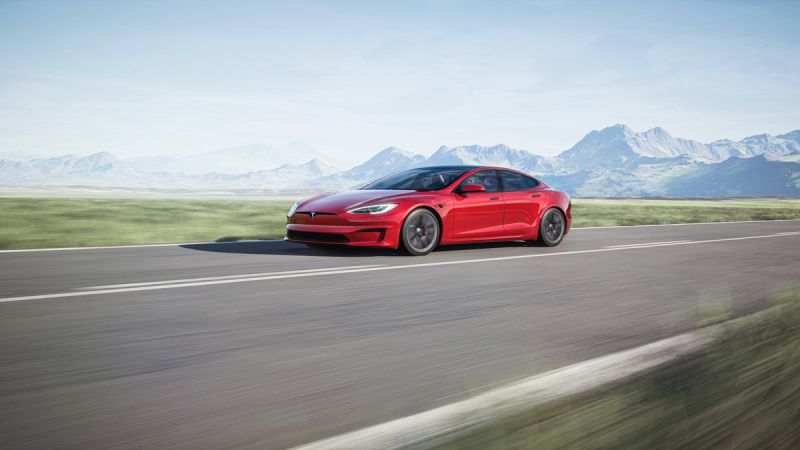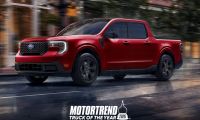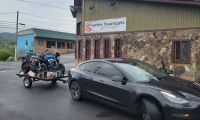There are two particular videos circulating on twitter that show the Model S Plaid on the drag strip. These videos are both shot from different angles. One of them shows a bird’s eye view of the drag strip. The other video is filming the driver of the car racing the Model S Plaid.
The first video
This first video is somewhat blurry. It shows a Tesla Model S Plaid racing what appears to be Dodge Challenger. The Challenger gets ahead of the Model S initially, but the Model S quickly overtakes the Challenger. It is unclear whether the Model S gave the Challenger a head start.
The most impressive part of this video is that apparently the Model S broke 10 seconds. If you post a time on a drag strip under 10 seconds, then you need a drag racing license. Drivers have been showing up at drag strips only to get kicked out because they posted a time under 10 seconds without a drag racing license.
Second video
The second video shows how fast the Model S Plaid really is. The Model S gave the other car a 4 or 5 second head start. After those 4 or 5 seconds, it seemed the Model S was so far back that it was out of reach. The Model S then took off from the startling line and overtook this other car in a few short seconds.
The car that was racing the Model S appeared to be a very run of the mill car. It probably had average to below average speed. However, it was still a very impressive feat to see the Model S catch up and win the race.
Why the Plaid is so quick
The Model S Plaid has the lowest drag coefficient of any car ever made at 0.208cd. The Plaid also has over 1,000 horsepower. These two statistics alone help tremendously. The Model S Plaid has three electric motors, and the two motors in the rear of the vehicle are torque-vectoring. The scariest part to all this is that Tesla could probably find a way to make this car even faster.











